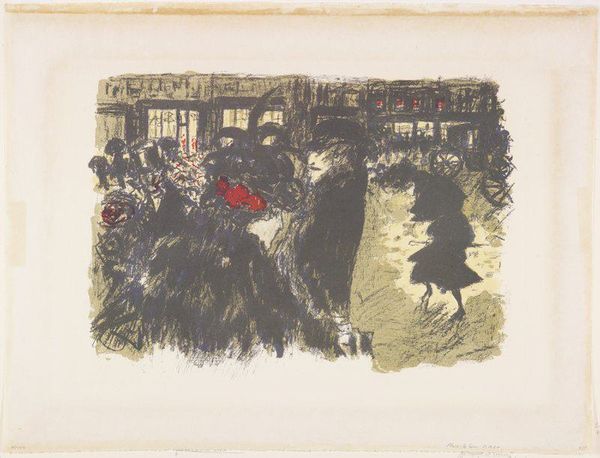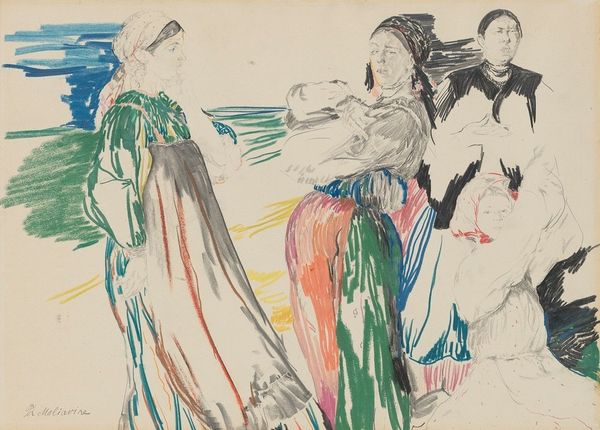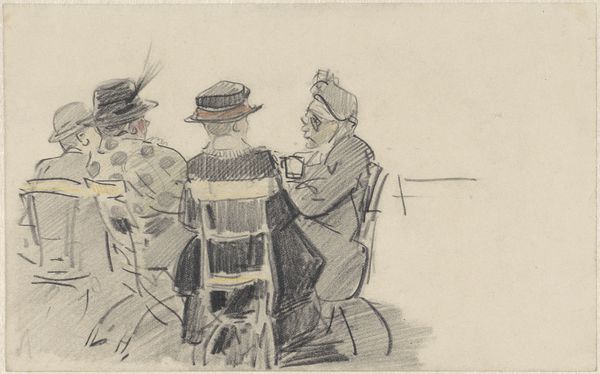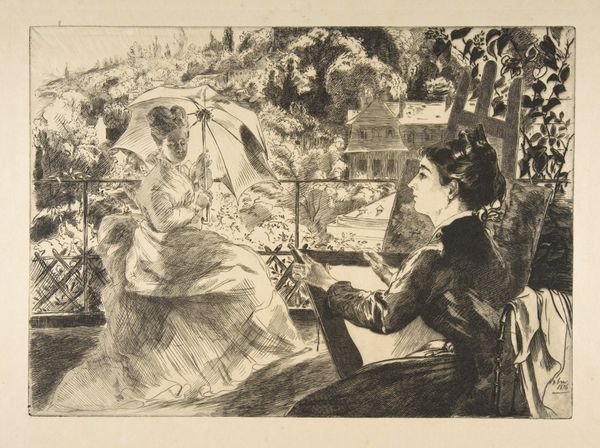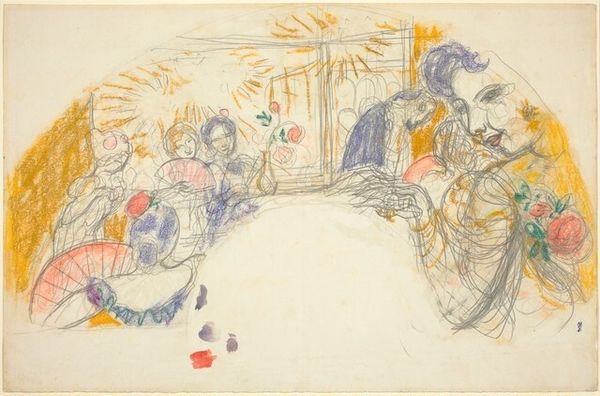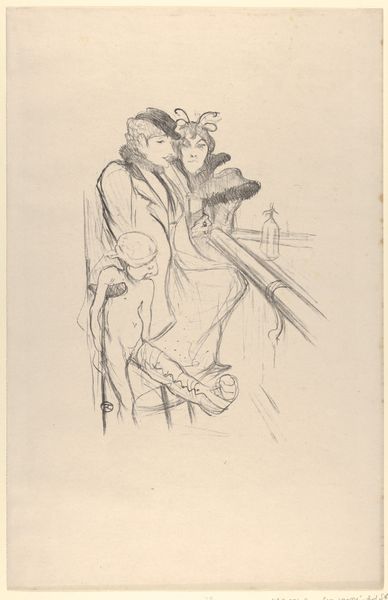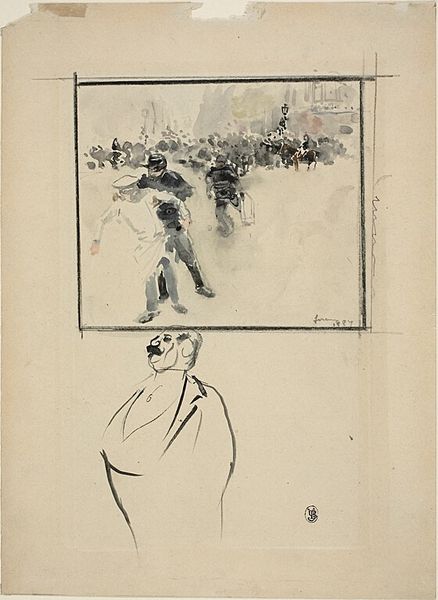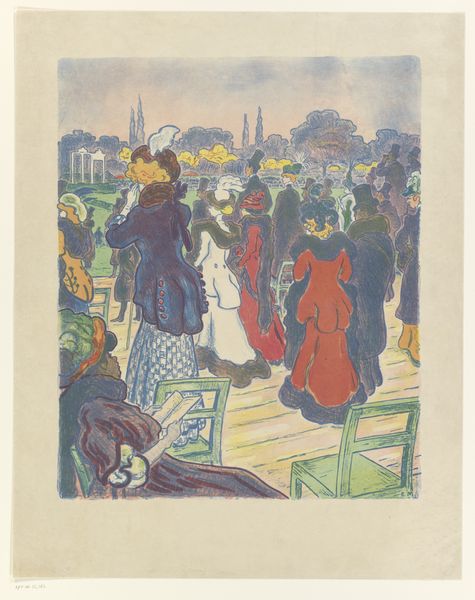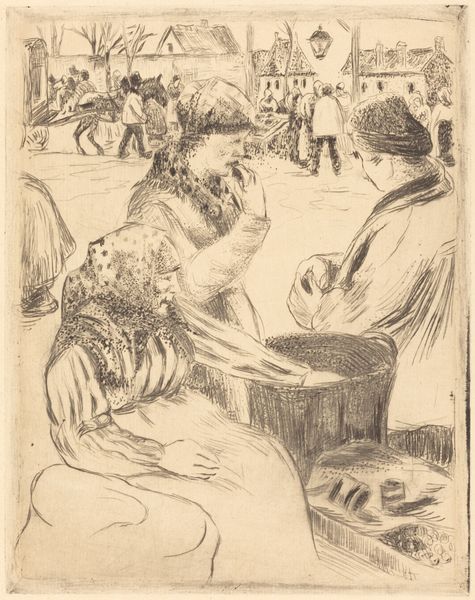
painting, watercolor
#
portrait
#
painting
#
watercolor
#
cityscape
#
modernism
#
watercolor
Copyright: Public domain
Editor: Here we have Charles Demuth’s “The Shine,” a watercolor from 1916. The subdued colors create a sense of everyday life in, maybe, a theater. What catches your eye in this piece? Curator: For me, it's how Demuth uses the watercolor medium to evoke the fragmented, often performative nature of urban social spaces. The figures are loosely defined, almost ghost-like, pointing to the transient and fleeting encounters within these spaces. The contrast of those ‘elite’ in the box seats, to what seems the everyday theatre worker really demonstrates the hierarchy of society at the time. Editor: So you're saying that Demuth’s choice of watercolor wasn’t accidental; it mirrors a sense of unease of the time? Curator: Exactly. Consider the historical context—1916, the height of World War I, social and class unrest and shifting gender roles…The city itself was undergoing rapid change. Demuth’s style, the blurred lines and ambiguous figures, feels like a deliberate choice to express these feelings of instability. What do you think about that? Editor: That makes me see the work completely differently, noticing how everyone seems detached, separate... almost alienated from one another. Curator: And it raises questions about who gets to occupy public space, who gets seen, and who remains on the periphery. Art gives us the means to see a social critique during this period of time. Editor: This has helped me see beyond the initial impression and think about what Demuth was commenting on. Thanks for that perspective! Curator: And thank you! Thinking about art’s relation to gender and race will help guide my looking for sure.
Comments
No comments
Be the first to comment and join the conversation on the ultimate creative platform.

